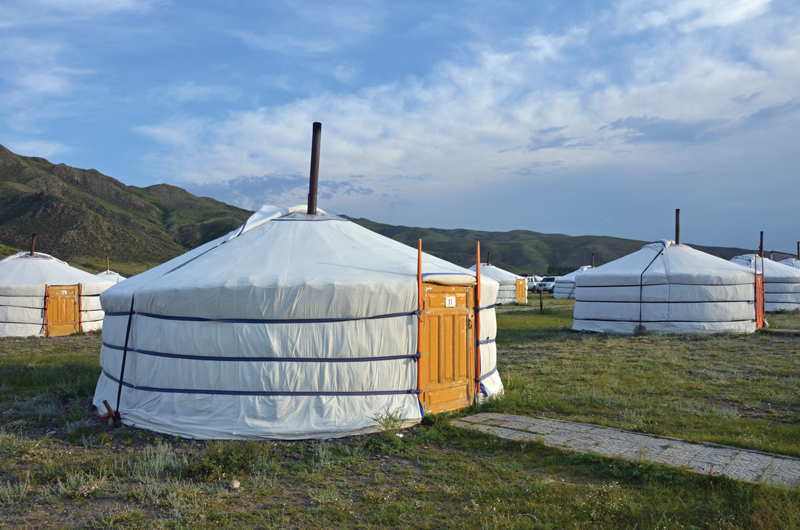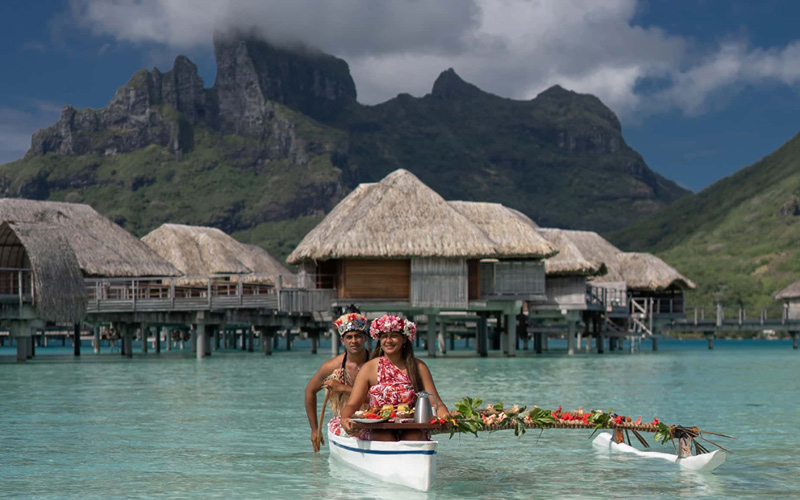Mongolia: Discover the Other Side of Nowhere
Sleeping in a ger (foldable yurt or circular tent) in the Gobi Desert is an adventure.

It is located way on the other side of nowhere. Unless you are a short person like me, it is necessary to stoop when entering. Forget luxuries like running water, private bathrooms or 24-hour electricity. But the interior is bright, clean and cheerful with beds (hard pillows), stools, a desk, sometimes a wood stove fire and usually a light bulb hanging from the top. Bathrooms are down
a path.
To most people, Outer Mongolia is the land of Genghis Khan (called Chinggis Khaan in Asia) and the Gobi Desert. The desert’s lunar landscape, wide-open spaces, big sky and far distant mountains are breathtaking. For centuries, this unique beauty has been home to nomadic tribes, along with their goats, horses, camels, chickens and gers.
Since there are no roads, exploration of this rutted area is done in 4WD vans. Giant dust clouds spew in their wake. Many Gobi days are spent driving. Along the way, Bactrian camels (two-humped) and horses graze while tribesman keep watch. At a well, there are flocks of sheep, goats and kids – both the animal and the human ones.
Another drive takes us to Khongoryn Els. One-hundred-foot high and 40-ft. wide sand dunes loom for about 60 miles alongside the “road.” It is like something out of Lawrence of Arabia. When the sand at the top of these “Singing Sands” shift from the winds, they make an odd, low-pitched reverberating sound. Some brave souls try to climb to the peaks to hear it. It is one step up and two slides back. Camels will take others to the top. I pass.
But I don’t pass a chance to wander the “Flaming Cliffs” (Bayanzag) where dinosaur bones and eggs were discovered in 1928. Its red undulating hills reminds me of Utah. Silence and a feeling of peace abounds as I wander up, down and around these glowing hills.
The Gobi is a one-hour flight south from Ulaanbaatar. Most travelers first visit the city before going to the Gobi. Mid-July is the best time to visit. Then, the weather is more temperate and Ulaanbaatar celebrates the colorful Naadam Festival. The day before the event begins, a huge military parade marches in Sükhbaator Square. It’s worth battling the crowds just to see the huge, bronze Genghis Khan statue sitting amid marble pillars and honor guards at the head of the square.
A pre-festival visit to the National Museum of Mongolia provides a peek into the country’s past. Exhibits of Stone Age sites, 12th century armor, the 1990 Democratic Revolution, plus tribal costumes, hats and jewelry is a prologue to Naadam pageantry and contests – wrestling, horseraces and archery.
Getting to stadium seats for the opening Naadam ceremonies is utter chaos. The long, dirt road is mobbed with people. Whole families come dressed alike. Others wear vibrant tribal costumes and leather boots. Hats are often pointed with a tassel hanging off the back or with fur or flaps.
The national anthem begins the festivities. Bleachers are a giant swatch of fluttering, red, Mongolian flags. Marching bands and soldiers take their turns rounding the stadium. Horseback riders are dressed in tribal duds. Hundreds of dancers dressed in vivid hues fill the field. Ballroom dancing and formations which remind me of a football half-time show are a sight to behold. The drumming is constant.
About 100 giant bruisers dressed in bikini bottoms, frontless shirts, hats and boots appear. The wrestling games begin. Several matches take place at once. The wrestlers keep at it until one hits the ground on his knees and arms. He raises his right arm and the winner walks under it – a sign of victory.
Archery contests are later. There are no targets. The archers aim their arrows to go through a distant cylinder – quite unique.
Horse races are the next day. People are everywhere and gers are scattered across the dusty countryside. There’s no oval, just an open field. The bareback-riding jockeys are children ranging from 5 to 13 years old. If they win the race, the kids get nothing. Prizes go to trainers and horses.
There’s not much else to see in Ulaanbaatar. But 35 miles east at Tsonjin Boldog stands a 130-ft tall, stainless steel, Genghis Khan. An elevator and a couple of flights of stairs lead outside to a close-up view of the emperor’s fierce looking face and open spaces for as far as the eye can see.
Still unaffected by tourism, the country is much the same as it has been. The peacefulness and simple life of Mongolia could change with tourism. That’s an incentive to go now and see its unspoiled beauty.
IF YOU GO
Few people speak English but they are very friendly.
Bring your own pillow. The ones in the gers are like rocks.
Try Mongolian barbeque. Pick out veggies and meat and they will be cooked for you on a kobe-like grill. It’s delicious.




